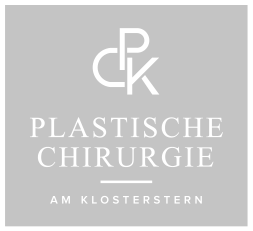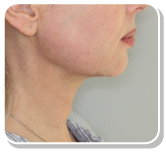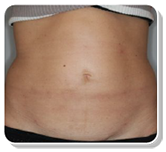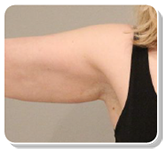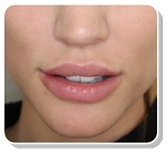Exosomes
Offered at our convenient location in Hamburg
Skin rejuvenation with exosomes is a revolutionary new way to refresh your complexion, reverse sun damage, and give your skin the tools it needs to promote optimal healing processes. These molecules are naturally produced and released in the body, functioning as carriers of various nutrients essential for skin health. Of these bioactive materials, some are messengers for cellular proliferation and tissue repair, helping fight against the most common signs of aging. Clinicians often apply exosomes directly to the skin as a topical serum or use it in combination with another procedure- like microneedling or a chemical peel treatment- to ensure the vital components of exosomes enter deep within the skin.
Finding the best treatment for attaining youthful and hydrated skin does not have to be a challenge. At Plastische Chirurgie am Klosterstern, Dr. Dalia Tobbia will treat your skin concerns with the personalized care you deserve. With exosomes, you can stimulate your skin’s natural production of collagen without the need for surgery or another invasive method. Exosomes work alongside your skin’s physiology to give you the natural-looking glow you are aiming for.
To find out more about Dr. Tobbia’s skincare solutions with exosomes, call +49 (0) 40 46 091 076 or inquire online with a request for a consultation.
Contents
Exosomes: An Innovative Anti-Aging Approach
Exosomes are part of a larger study of regenerative medicine, a field that studies how components of the human body can facilitate a therapeutic/healing effect. Since exosomes naturally function within the body, these molecules are biocompatible, meaning that they will not cause a negative immune response in your skin. As they come into contact with your skin’s cells, they work to revitalize its elasticity and texture. On the surface, they can result in the reduction of wrinkles and fine lines, but they take extensive action deep within the dermis.
What Can Exosomes Do?
Exosomes are considered extracellular vesicles (EVs), a type of molecule that functions to carry nutrients and other helpful materials to the skin.
When clinicians apply exosomes to the skin, they facilitate a few different processes:
- Wound healing: These molecules regulate immune responses to promote skin cellular regeneration.
- Immune system support: Exosomes work alongside T cells, a type of white blood cell that destroys cancer cells and bacteria-causing infections.
- Extracellular support: Exosomes function as part of the extracellular matrix, providing support in areas between cells filled with various proteins and other molecules.
- New blood vessel creation: These bioactive particles support angiogenesis- new blood vessel formation- which is vital for the skin to be able to transport nutrients.
- Cellular reproduction support: They contain molecules called growth factors to stimulate tissue regeneration and other molecules skin cells can benefit from. (1)
Benefits
Topical exosomes are an excellent alternative to other serums and creams that can sometimes irritate sensitive skin types, but there is an impressive range of benefits to consider as well:
- It is an entirely non-invasive treatment, and patients do not need any form of anesthesia.
- Exosomes are found naturally in the body and are present in fluid between joints (synovial fluid), blood, and even saliva. (2)
- In recent studies, researchers explored the possibility that exosomes may function as an alternative treatment to stem cell therapy. Clinicians often utilize these cells to repair damaged connective tissues like tendons and cartilage. (3)
- They jumpstart and boost the production of collagen and elastin fibers, the most vital aspects that make up healthy, youthful skin.
- They trigger cellular turnover, helping the epidermis renew itself and eliminate superficial hyperpigmentation such as liver spots, birthmarks, and more.
- They can optimize the effectiveness of microneedling sessions and chemical peels.
What Do Exosomes Contain?
Exosomes carry a range of valuable nutrients that penetrate deep within the skin, including:
- Growth factors: These molecules are the messengers that signal skin repair and renewal.
- Nucleic acids: DNA and RNA are the most common nucleic acids that work together as the blueprints necessary for protein synthesis- the production of protein itself. (4)
- RNA: This nucleic acid shares many similarities to DNA, but it serves as a biological interpreter of DNA to create proteins.
- Lipids: These fat molecules work as barriers against bacteria and other environmental hazards that can speed up aging. Lipids also help the skin retain moisture, promoting the “glowy” complexion that is so sought after.
- Peptides: These molecules are made up of short chains of amino acids, the main components of proteins like collagen and elastin.
What Happens After You Apply Exosomes?
After topical application, exosomes work to first come into contact with the outermost layer of the skin, the epidermis. By aiding the cells of the epidermis (keratinocytes) the skin creates a more efficient barrier against UV rays and other harmful factors that contribute to aging. Deeper within the skin, exosomes stimulate the fibroblast cells, the cells that produce collagen and elastin. They also control irritation from inflammation to foster clearer, more resilient skin.
Advice and Treatment
During your consultation at Dr. Tobbia’as office, she will ask you about the aging concerns you would like to treat and your expectations for your treatment plan. Though exosomes can help resolve wrinkles, fine lines, minor discolorations, and skin textural irregularities, it will take time to see the results. She will evaluate your skin to determine if you could benefit from this topical serum as a complementary treatment to your usual skincare routine. While exosomes can be incredibly beneficial to your overall skin health, you may require a more intensive approach, such as a facelift or brow lift, if you have more severe laxity that you would like to tighten.
To get started with a personalized plan from Dr. Tobbia, call +49 (0) 40 46 091 076, fill out her contact form, or simply visit in person at her office in Hamburg.
Application and Results
Exosome treatment is remarkably simple. First, Dr. Tobbia will cleanse your skin of any impurities, prepare the exosome serum, administer small amounts across your face, and gently rub it in like a face cream. You will experience no irritation as it makes contact with your skin; instead, it will feel soothing and cooling. Dr. Tobbia will give you follow-up instructions depending on your specific skin issues. In general, you should avoid using other topical products and/or washing your face for at least 1 day to help the serum penetrate more efficiently. Dr. Tobbia may give you an at-home treatment to apply on your own.
Regardless of your skin concerns, you will likely need to schedule a treatment series to get the most out of this innovative treatment, especially if you have deeper wrinkles and extensive sun damage. Within a few days of each session, you should expect to attain a healthy glow and smoothness. Within a few weeks of repeated treatments, you may notice mild tightening and an improvement in elasticity.
Corresponding and Complementary Procedures
Microneedling
Dr. Tobbia can apply the serum and perform a microneedling treatment to allow the healing components directly into the dermis of the skin, the second layer. Deeper skin penetration of topical exosomes can be enhanced by using a microneedle device. Microneedling devices have tiny, thin needles designed to penetrate the skin and cause micro-injuries, stimulating wound healing and enhancing collagen renewal. Aside from pairing microneedling with exosomes, Dr. Tobbia can perform microneedling with stem cells, another form of regenerative medicine.
Chemical Peels
A chemical peel is an acidic solution applied to the skin to remove dead skin cells and increase cellular turnover. With weaker solutions that are more suitable for patients with more sensitive skin, Dr. Tobbia can treat acne, oily skin, enlarged pores, and the inflammation that accompanies it. With medium and deep peels, she can target and erase wrinkles, hyperpigmentation, and even scars. Just like microneedling, these treatments trigger the skin to heal more optimally and produce collagen as it sheds dead layers. Dr. Tobbia can combine your chemical peel with exosomes to maximize the benefits of each.
Cost of Exosomes in Hamburg
The cost of your exosome treatment plan will depend on the number of sessions you will require and any accompanying procedures. Dr. Tobbia will give you a total cost estimate for this unique form of skin rejuvenation during your consultation. If you would like to explore and learn more about other options offered at Plastische Chirurgie am Klosterstern, read through our blog.
You can also begin by getting in touch with our staff at +49 (0) 40 46 091 076 or requesting your appointment online. Dr. Tobbia will ensure that you have a positive experience custom-tailored to your desire for better quality, refreshed skin.
FAQ
How long do exosomes take to work?
When applied topically, exosomes can begin to work within a few days, but it may take a few weeks for the skin to fully absorb and utilize the available nutrients.
What are exosomes?
Exosomes are a type of extracellular vesicle, a type of particle that transports bioactive materials, like nucleic acids, lipids, peptides, and more. They are naturally produced in the body and reside in between cells- within the extracellular matrix. They are not cells because they cannot replicate. However, clinicians can harness their bioactive benefits and make topical serums to rejuvenate the skin.
What do exosomes do within the body?
When naturally released in the body, exosomes work to facilitate intracellular communication and the transfer of proteins between cells.
How can I make exosomes more effective?
After your treatment, you should avoid rubbing your face or washing it for at least 24 hours. In the days following your treatment, you should practice dermatologist-approved skincare and apply sunscreen daily. You should ask your clinician about if or when you should return for a follow-up exosome session.
References
- Dinescu S, Dobranici A, Tecucianu R, et al. Exosomes as Part of the Human Adipose-Derived Stem Cells Secretome- Opening New Perspectives for Cell-Free Regenerative Applications. Advances in Experimental Medicine and Biology. Published online 2020:139-163. https://www.doi.org/10.1007/5584_2020_588
- Yoo K, Thapa N, Chwae Y, et al. Transforming growth factorβ family and stem cellderived exosome therapeutic treatment in osteoarthritis (Review). International Journal of Molecular Medicine. 2022;49(5). doi:https://doi.org/10.3892/ijmm.2022.5118
- Cho, Byong Seung, et al. “Exosomes Derived from Human Adipose Tissue-Derived Mesenchymal Stem Cells Alleviate Atopic Dermatitis.” Stem Cell Research & Therapy, vol. 9, no. 1, 11 July 2018, https://doi.org/10.1186/s13287-018-0939-5.
- Blanco, Antonio, and Gustavo Blanco. “Chapter 6 – Nucleic Acids.” ScienceDirect, Academic Press, 1 Jan. 2017, www.sciencedirect.com/science/article/abs/pii/B9780128035504000069.
